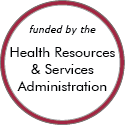Rural Project Examples: Populations
Other Project Examples
Clinic for Special Children
Updated/reviewed August 2025
- Need: To provide healthcare for children and adults at-risk for genetic conditions from the rural, uninsured Amish and Mennonite communities in southern Pennsylvania.
- Intervention: A clinic that serves as a comprehensive medical practice for children and adults (primarily from the Amish and Mennonite communities) with rare, inherited, or complex disorders.
- Results: In 2024, about 1,700 active patients with more than 480 unique genetic mutations were treated at the Clinic for Special Children.
CAPABLE (Community Aging in Place—Advancing Better Living for Elders)
Updated/reviewed July 2025
- Need: To help older adults age in place.
- Intervention: For four to five months, CAPABLE participants receive home visits from a registered nurse, occupational therapist, and home repair services.
- Results: There are currently 38 CAPABLE sites across the country, 19 of which are located in rural communities.
Energy Capital Cooperative Child Care (ECCCC)
Updated/reviewed July 2025
- Need: To bring needed child care to rural Mercer County, North Dakota.
- Intervention: A nonprofit cooperative provides part-time and full-time child care.
- Results: ECCCC currently has about 75 children enrolled, but it had 86 children at the height of its enrollment history.
SJRC Texas | Belong Community-Based Care (CBC)
Updated/reviewed July 2025
- Need: To develop a child and family well-being system that provides rural Texas communities with flexibility, authority, and adaptability to improve services and outcomes for children and families.
- Intervention: SJRC Texas's division Belong is the lead provider for Community-Based Care (CBC) for Region 8, which encompasses 28 counties. Services include foster and kinship care, case management, and reunification services for those involved in the foster care system.
- Results: Since October 2021, SJRC Texas | Belong CBC has served more than 2,150 children and young adults, and 834 youth have achieved permanency through family reunification or kinship care.
Together With Veterans Rural Suicide Prevention Program
Updated/reviewed July 2025
- Need: Suicide among veterans has been steadily increasing, and rural veterans have an increased risk of death by suicide compared to urban veterans.
- Intervention: A program called Together with Veterans was formed to help rural communities address and prevent suicides among veterans. The initiative is veteran-led, collaborative, evidence-based, and community-centered.
- Results: Data collection is ongoing.
Hope Squad
Updated/reviewed June 2025
- Need: To reduce youth suicide rates.
- Intervention: First begun in Utah, Hope Squad is a nationwide program that trains youth to identify peers' signs of distress and connect them to help. Hope Squads educate the entire student body to increase connectedness and reduce stigma.
- Results: Studies suggest that Hope Squad schools' students with suicidal thoughts are more likely than non-Hope Squad schools' students to solicit help. In addition, stigma surrounding mental illness is decreasing.
It's a Girl Thing: Making Proud Choices
Updated/reviewed June 2025
- Need: Teen pregnancy, sexually transmitted diseases, and mental health challenges in adolescent girls were concerns for members of Union Parish, Louisiana.
- Intervention: Union General Hospital, a Critical Access Hospital, created the program It's a Girl Thing: Making Proud Choices to teach prevention, self-confidence, personal responsibility, and mental well-being to teen girls.
- Results: Teen pregnancy rates in Union Parish have dropped by more than 40% since the start of the program, significantly exceeding the program's initial goal of 5%. Graduation rates have also increased. The addition of Together We Can Be Bully Free as an integral part of It's a Girl Thing has further expanded mental health support for participants.
Kid One Transport
Updated/reviewed June 2025
- Need: Transportation to medical appointments for children and expectant mothers living in rural Alabama.
- Intervention: Kid One Transport provides rides to medical appointments for clients who otherwise have no other means of transportation.
- Results: The program has transported 477,880 children and expectant mothers to and from medical appointments. Children have recovered from life-threatening illnesses and are experiencing a higher quality of life.
Structured Training for Rural Enhancement of Community Health in Obstetrics (STRETCH-OB)

Updated/reviewed June 2025
- Need: To improve maternal and birth outcomes in rural and underserved areas by increasing the number of family medicine physicians in these areas who have high-quality, evidence-based obstetrical care skills.
- Intervention: The STRETCH-OB program trains a select number of family medicine residents at the University of Illinois College of Medicine Rockford each year to provide high-quality maternity care, including surgical obstetrical care.
- Results: Four STRETCH-OB residents have graduated as of June 2025 and all have cesarean section privileges in their practice.
The Sapling Center
Updated/reviewed June 2025
- Need: To create a safe space for youth and young adults, ages 14 to 25, in rural eastern Kentucky.
- Intervention: The Sapling Center provides independent living skills education and offers a wide array of services as well as fun activities in a supportive environment.
- Results: The 5 Sapling Center locations serve 50-75 teens and young adults every day.
For examples from other sources, see:
